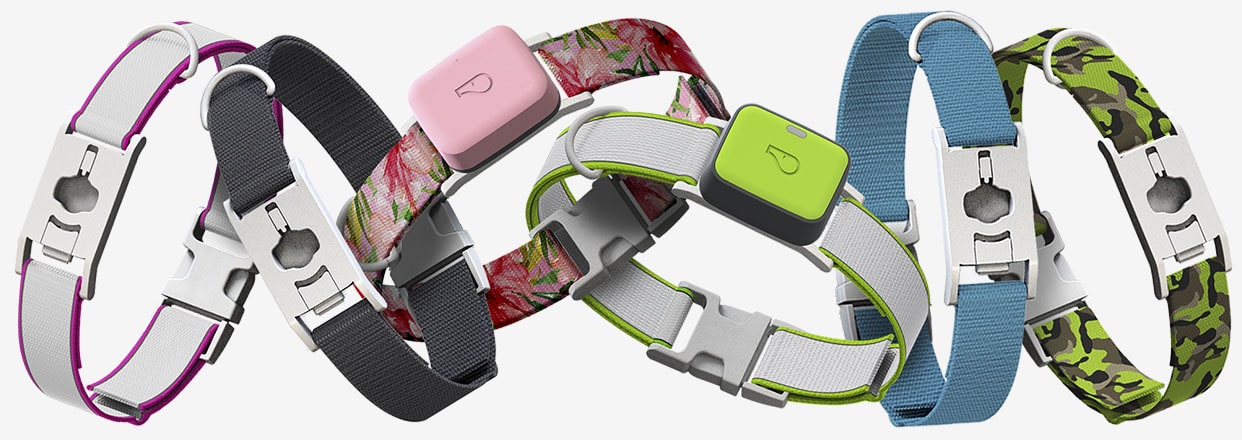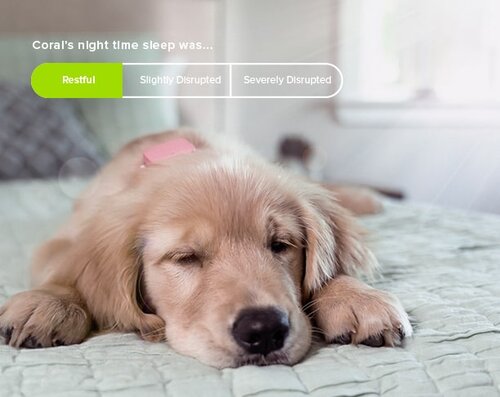Whistle Blowers

These days, wearable tech is all the rage. Whether we’re talking basic fitness trackers that help us keep tabs on our daily step count or how long it took us to fall asleep last night, our obsession with the numbers all boils down to getting - and staying - healthy. But, fitness trackers aren’t just for humans anymore, Toto.
Two of our very own Kibble & Dribble paw-staffers volunteered to sport spiffy Whistle FIT collar fitness trackers for the sake of science. Their owner - and KB contributing writer, Pauline Campos - agreed to participate in a study done by Banfield Hospital, Whistle FIT, and the Pet Insight Project (all part of the Mars Petcare family), who partnered to analyze data from over 30,000 participating dogs and examine the correlation between activity and overall health.
Pauline fills us in on what these trackers revealed about her pets’ health and wellness and why corporate America thinks this information is so valuable for pet owners and the veterinary industry. (Note: study participants received free Whistle FIT trackers, as well as milestone rewards such as a canine DNA test.)
Lord Nibbler, age 4.
K&D: Fill us in from the beginning; how did you get involved with this study?
Pauline Campos: My dogs, Finnigan and (Lord) Nibbler, are patients with Banfield Pet Hospital. We received an email inviting us to participate. I’m all about using the data from my Apple Watch to meet my activity and sleep goals, so I couldn’t pass up the opportunity.
K&D: What kind of data did they ask you to record?
PC: We were asked to record the pups’ basic daily activity total via their Whistle FITs, as well as monitoring their scratching, eating, and licking behaviors (a bit of extra work on my part).
K&D: OK, so were there any big revelations or surprises?
PC: It was really eye-opening to see that my dogs meet or exceed their activity goals on the days that I am most active. Deadline days crunching out assignments used to mean that they just got the bare minimum outside, but now that I have the visual with the Whistle Fit data shown in the app on my iPhone, I can proudly say that the trend these days is both dogs crushing their daily goals. And considering Finnigan is turning 17 in a few weeks, that’s saying something! Both of my dogs have a 30-minute daily activity goal, and my competitive nature means that I’m setting hourly timers to take a break, grab their leashes, and head outside just for the sake of earning the activity milestone badges.
K&D: What inspired the study?
David Allen (Product Manager, Pet Insight Project): Early on, the study was talked about as a “check engine light” for pet owners. Few of us really understand the workings of a car engine, so thankfully there is a check-engine light that lets us know when there is an issue with the vehicle. The same concept is true for managing dog health! Dogs can’t talk, and not many of us are equipped to diagnose canine health issues based on observation alone, so wouldn’t it be amazing if we could create a kind of “check engine” light for dog health based on wearable data?
K&D: How are researchers gathering information from participants?
DA: Our team distributes thousands of Whistle FIT devices each month to owners of patients at Banfield Pet Hospital who have given us permission to examine their dog’s Banfield health records. In addition to the wearable data and electronic health record data, our participants are constantly giving us feedback on our newest features. Wearable data, electronic health records, and participant feedback combined gives us an incredibly valuable database that we spend much of our time mining for insight.
K&D: Is the Whistle FIT tracker available to the public?
Kathy Sanders (CMO, Whistle): All the features of the Whistle Fit tracker are available in our Whistle GO trackers. The Whistle GO trackers also include GPS tracking to allow you to keep an eye on your pet during the day; if they make a sneaky escape you can use live GPS tracking in the Whistle app to quickly locate them anywhere in the US.
K&D: How did you know you were on the right “track” by introducing the Whistle FIT to the market?
KS: In April of this year, Whistle conducted a survey of 1,000 U.S. pet owners which outlined their concerns, priorities and attitudes towards tracking and monitoring their pets. First of all, this survey revealed just how important our pets are in our lives today, with nearly half (49%) of respondents ranking their dog as a top-three concern in their lives. The top-ranked concerns were running away, health, and safety. Almost half (43%) of respondents stated they worry about their dog getting enough exercise.
Whistle FIT offers pet owners and researchers a window into the daily lives of pets, anywhere they go. Whistle FIT tracks your dog's activity in a simple mobile application so you can ensure your best friend gets the regular exercise needed to stay happy and healthy.
K&D: How important is daily activity when it comes to a dog’s overall health?
Emi K. Saito (Veterinarian with Banfield Pet Hospital): Regular, lifelong exercise is a critical part of any well-rounded dog’s lifestyle. It is important not only for building and maintaining healthy muscle mass, but it can help maintain your dog’s quality of life – and strengthen your bond with your pet. Just like people, inadequate activity levels can lead to excess weight. This excess weight has been linked to other serious diseases in pets, including arthritis, diabetes, breathing (or respiratory) problems, and heart disease… If your pet is overweight, and your veterinarian has ruled out underlying conditions like thyroid disease or osteoarthritis, …small changes can have big long-term health benefits. For example, start walking your dog a few extra blocks each day, let your dog play at the dog park with the other dogs a little longer, or utilize dog walking services in your area to get your dog out for an extra walk during the day. Once your dog’s weight goals are met, your commitment is not over – maintaining that healthy weight and body condition are as important as the process to get there. This journey is a great opportunity to strengthen your relationship with your dog, while supporting their health and quality of life.
While initially focusing on activity and GPS tracking, Whistle’s latest lineup of trackers — the Whistle GO and Whistle GO Explore — can also monitor changes in health related behaviors like sleeping, scratching and licking, offering pet owners more data to inform preventive care. The new trackers have a health-monitoring platform based on research from the Pet Insight Project. What’s new with the Whistle GO and GO Explore is the ability to see a health report from your dog on a weekly basis. The tracker looks at licking, scratching, sleeping, and more, and then alerts pet owners if there are changes in these behaviors. If your dog is scratching or self-licking more than usual, it will alert you. You can then take the information-packed reports that are emailed to you and forward them to your veterinarian to identify the cause.
Whistle GO and GO explore are available via Whistle’s website and on Amazon. Whistle FIT is available to pets & their people who join the Pet Insight Project.
Pauline Campos is a widely-published author who has written for The Washington Post, Marie Claire, and many others. She’s the mother to an amazing autistic girl, dog mom to Finnegan and Nibbler, and believes ADHD is her superpower.








